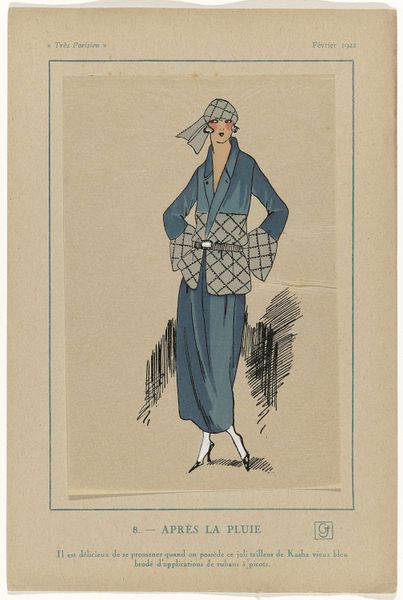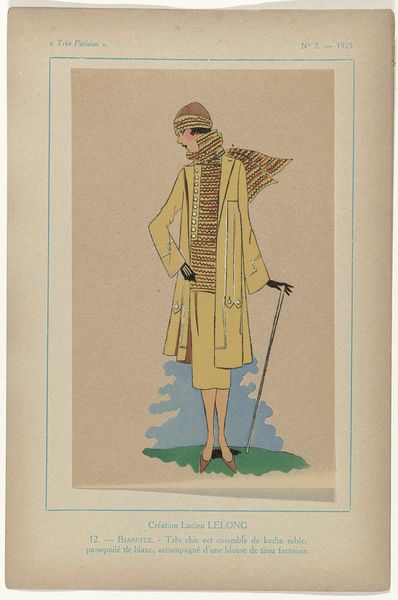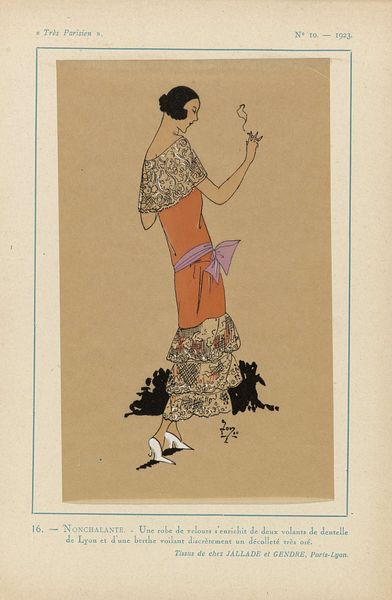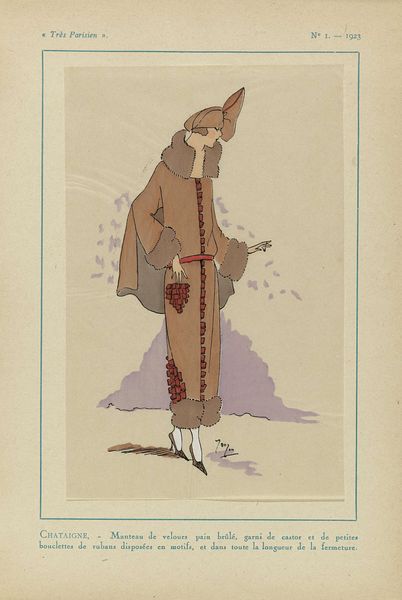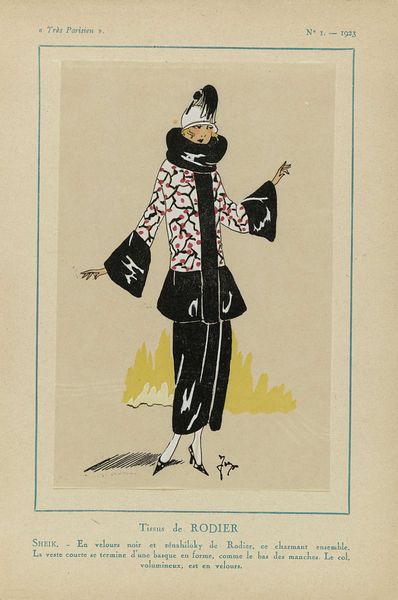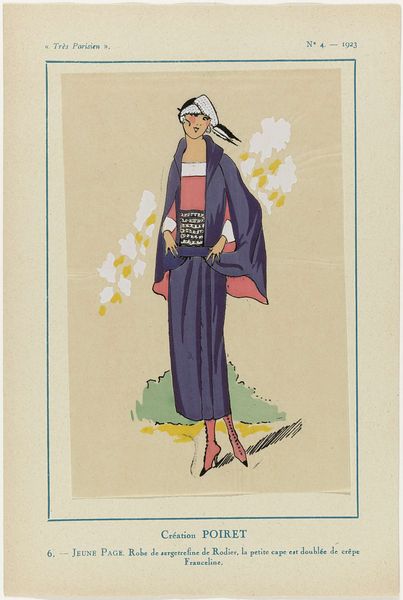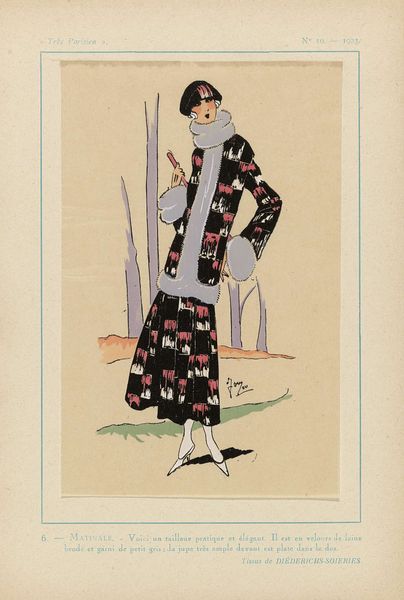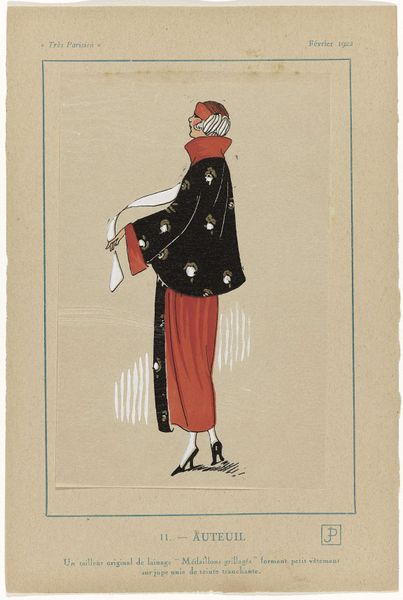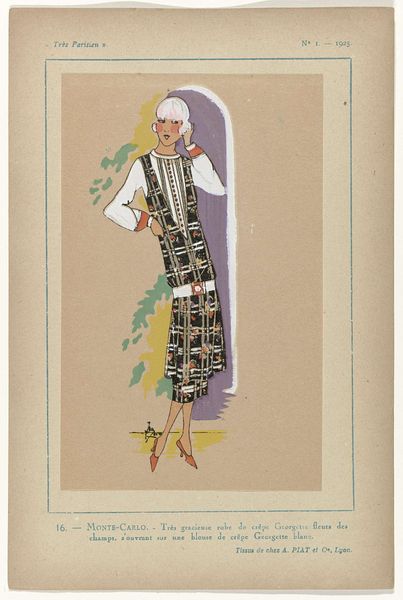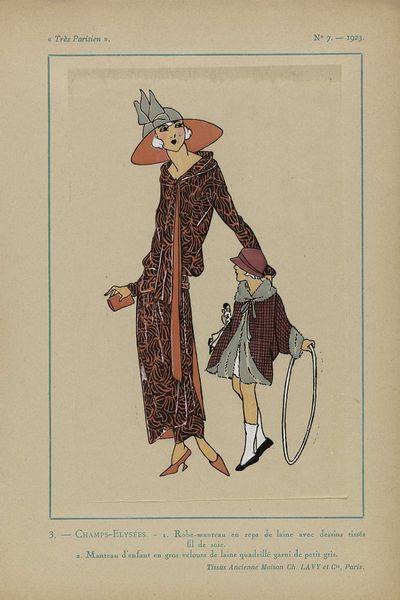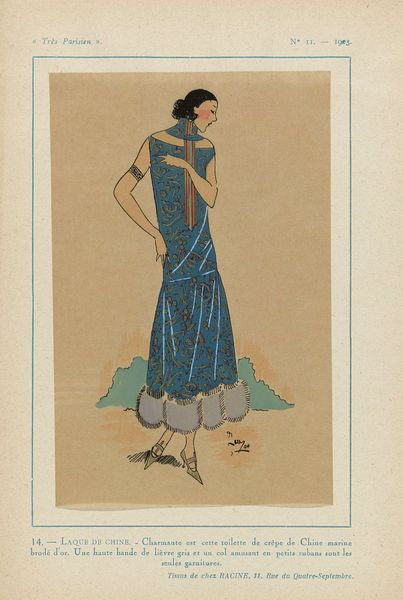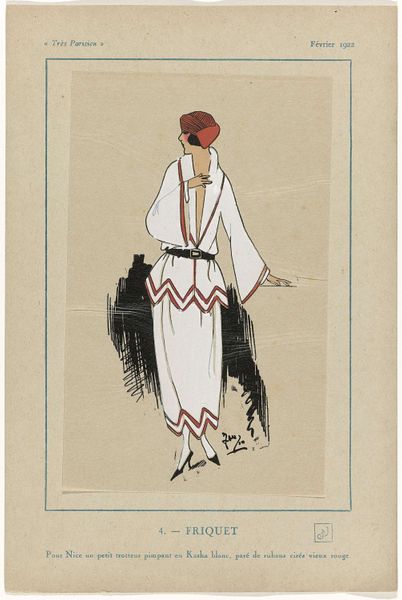
Dimensions: height 269 mm, width 180 mm
Copyright: Rijks Museum: Open Domain
Curator: Let’s dive right in. What are your first thoughts on this illustration, “Très Parisien, 1923, No 1: Création Philippe et Gaston," a drawing with ink and watercolour by, likely, anonymous hands at the Rijksmuseum? Editor: Well, the figure's bold outline and the flat colour planes really give it that Art Nouveau feel. The description mentions "cachemire garnie de renard gris"—cashmere trimmed with grey fox—suggests the opulence of the garment. What really strikes me, though, is how this fashion plate functions as an advertisement for luxury goods, aimed at a specific, wealthy clientele. What else do you see? Curator: Exactly. It’s not just a pretty picture; it's a document of early 20th-century consumer culture, deeply embedded in class and economic structures. Think about the labour involved: the production of cashmere, the trapping and processing of fox fur, the garment construction. These were specialized skills, often exploited labour. Editor: So you’re saying the beauty distracts us from the exploitation behind the materials. Curator: Precisely. Consider how the artist presents this labor as effortlessly chic, erasing the realities of production. Even the medium - ink and watercolour - suggests quick reproduction and widespread dissemination, fueling consumer desire. Does it make you question how we consume art that celebrates consumerism itself? Editor: Definitely. It's unsettling to think of all the hidden processes behind what looks so elegant and refined. Curator: It reminds us to always consider the material conditions behind the image, and to question whose stories are being told—and whose are being left out. Editor: That’s a good point. Thanks, I’ll definitely remember that in my own work now. Curator: My pleasure. Keep digging.
Comments
No comments
Be the first to comment and join the conversation on the ultimate creative platform.
